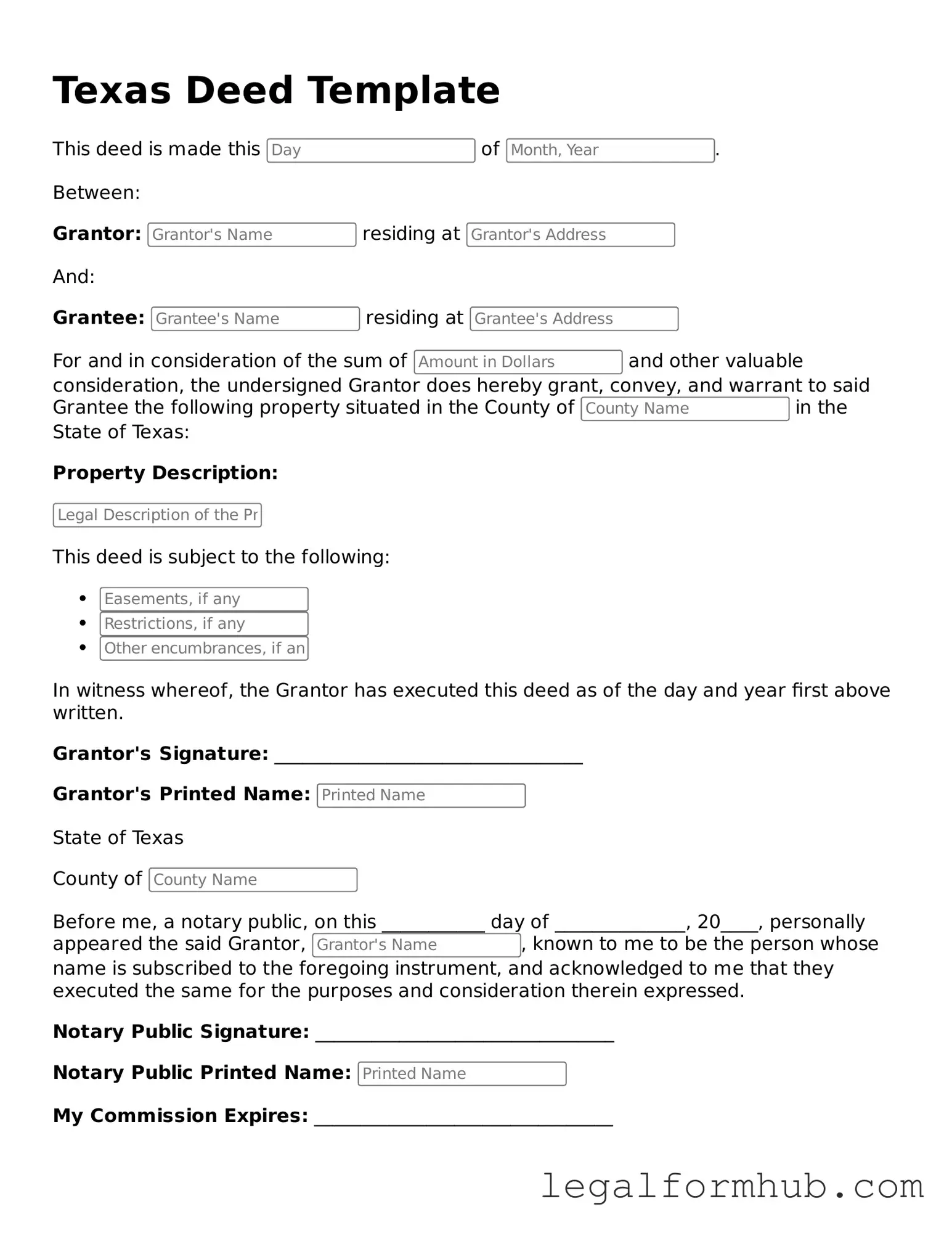A Texas Deed is similar to a Quitclaim Deed, which is a legal document used to transfer ownership of property. In a Quitclaim Deed, the person transferring the property, known as the grantor, relinquishes any claim they may have to the property without making any guarantees about the title. This type of deed is often used among family members or in situations where the parties know each other well, as it offers no protection against potential claims from others. The simplicity of a Quitclaim Deed makes it a quick way to transfer property, but it also carries more risk for the recipient, as they receive no assurances regarding the property’s title.
Another document similar to the Texas Deed is the Warranty Deed. Unlike a Quitclaim Deed, a Warranty Deed provides a guarantee from the seller that they hold clear title to the property and have the right to sell it. This document assures the buyer that they will not face any future claims against the property. Warranty Deeds are commonly used in real estate transactions because they offer greater security for the buyer. The seller is legally bound to defend the title against any claims, making this type of deed a more reliable option for transferring ownership.
The Special Warranty Deed is another document that shares similarities with the Texas Deed. This type of deed provides a limited warranty; the seller guarantees that they have not done anything to impair the title during their ownership but does not make any promises about the title before their ownership began. This is particularly useful for sellers who want to protect themselves from liability for issues that may have arisen prior to their ownership. Buyers should be aware that while a Special Warranty Deed offers some protection, it does not provide the same level of assurance as a full Warranty Deed.
A Bill of Sale is also comparable to a Texas Deed, although it is typically used for personal property rather than real estate. This document serves as proof of the transfer of ownership of items such as vehicles, furniture, or equipment. A Bill of Sale includes details about the item being sold, the sale price, and the names of the buyer and seller. While a Deed formalizes the transfer of real estate, a Bill of Sale accomplishes the same for personal property, ensuring that both parties have a record of the transaction.
Lastly, a Trust Deed, or Deed of Trust, is another document that is similar to a Texas Deed in that it involves the transfer of property ownership, but it serves a different purpose. A Trust Deed is used in real estate transactions to secure a loan. In this case, the borrower conveys the property to a trustee, who holds the title until the loan is paid off. If the borrower defaults, the trustee has the authority to sell the property to satisfy the debt. This type of deed is commonly used in mortgage transactions and provides a way for lenders to protect their investment while still allowing the borrower to retain possession of the property.
For those looking to finalize their transaction, the process is simplified with an clear ATV Bill of Sale document that outlines the specifics of the sale and protects both parties involved.
